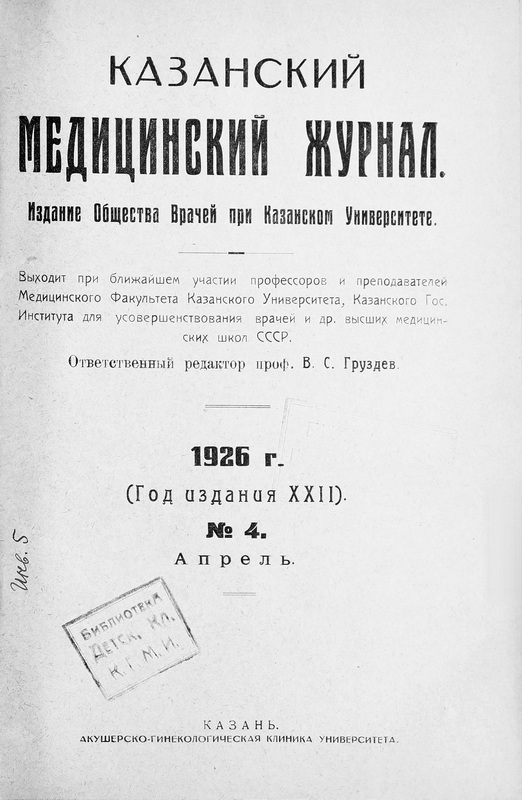Splenectomy for sepsis
- Authors: S. V.
- Issue: Vol 22, No 4 (1926)
- Pages: 460
- Section: Abstracts
- Submitted: 21.01.2021
- Accepted: 21.01.2021
- Published: 12.04.1926
- URL: https://kazanmedjournal.ru/kazanmedj/article/view/58851
- DOI: https://doi.org/10.17816/kazmj58851
- ID: 58851
Cite item
Full Text
Abstract
According to prof. I V Zavadsky (Russian. Clin., 1925, No. 20) slow sepsis shows the surgical removal of the spleen, if the patient has a prolonged fever, enlargement of the spleen and a certain degree of anemia (of course, you must first exclude malaria, typhoid disease, tbc , lues, leukemia, lymphogranulomatosis, leishmaniasis, and Maltese fever). The presence of microbes in the blood is not a contraindication to this operation, which should not be used only in case of obvious significant signs of cardiac decompensation.
Keywords
Full Text
По мнению проф. И. В. Завадского (Русск. Клин., 1925, № 20) медленный сепсис показует оперативное удаление селезенки, если у больного имеются длительная лихорадка, увеличение селезенки и известная степень анэмии (конечно, при этом нужно предварительно исключить малярию, брюшнотифозное заболевание, tbc, lues, лейкемию, лимфогрануломатоз, лейшманиоз и мальтийскую лихорадку). Наличность микробов в крови не служит противопоказанием к данной операции, которая не должна применяться лишь при явных значительных признаках сердечной декомпенсации.
References
Supplementary files







